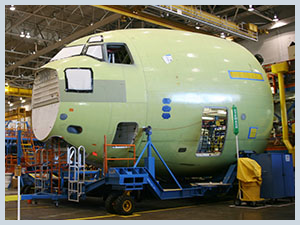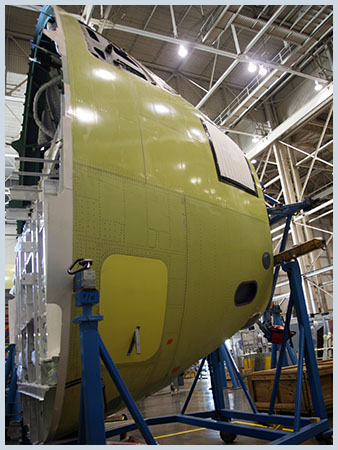Ultrasonics
In laser ultrasonics, lasers are used to generate as
well as detect ultrasonic waves. Ultrasonic waves
are used for non-destructive testing of materials
such as composites in aerospace and other
industries. Upon interaction with the material,
the resulting ultrasonic waves are optically
detected using lasers by techniques
such as Fabry-Pérot interferometry.



